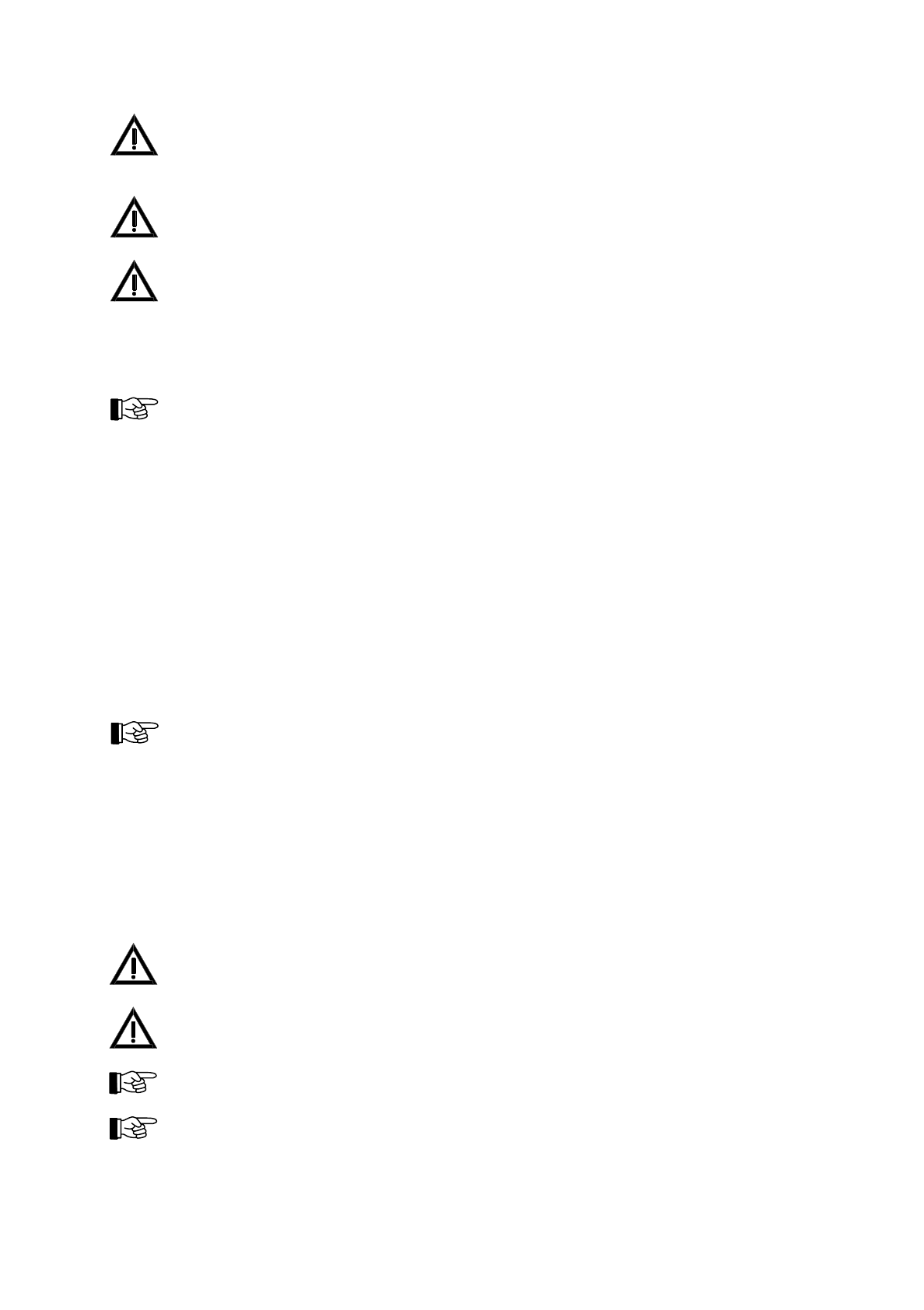
No alarm is transmitted by detector zones that are disabled, faulted or put in test condition. A detector
zone that is disabled, faulted or put in test condition and is programmed in a two-zone dependency is
removed from this dependency. If the dependency consists only of two detector zones one of which is
out of function, the two-zone dependency cannot activate the devices that are to be activated!
Parameters of actuations can be set so that they are activated at disablement or at a fault of the corre-
sponding detector zone as well. Information on the kind of activation used in your system can be found
in the engineering data of your fire detection system.
The alarming of a detector zone for test purposes leads to a real alarm, technical message or fault
alarm, and to the activation of all actuations whose parameters have been set for this detector zone.
Note that this can lead to an unintended activation of an extinguishing system and thus to danger to
life, and to costly damage of property. Contact the responsible person (e.g., fire prevention officer,
safety officer) prior to activating a test alarm, so that he can make the required mechanical or electrical
switch-offs of extinguishing systems or similar devices before the activation of the alarm.
During a test alarm, transmitting devices or alarming devices are not activated.
During maintenance of the system, detector zones are set to test condition so that its detectors can be
tested on their function without activating a fire alarm. See from page 65 in Chapter 6.1.2: "Testing of
detectors". By disabling and then enabling the detector zone, you leave the state of test condition of
this detector zone.
4.7.7.2 Operating single elements of detector zones
Provided that the technology used in your control panel allows it, you can operate individual elements
of a detector zone. Elements can be enabled and disabled, and can be activated for test purposes. The
maintainer also can get a read-out of the actual measured value and a maintenance prediction, if intelli-
gent detectors are used. (These actions are described in Part B of this User Manual).
The selection of a detector zone is similar to the description in the foregoing section, but you have to
use the button 'Element' (LC-display shows: "/") instead of the button '
↵
' to confirm the zone number.
Now the first available element number will be suggested and displayed to the right of the zone number
and the "/". The third line of the LC-display shows the element text. You select the desired element
similar to the selection of the detector zone and confirm it by using the '
↵
'-button.
For the installer: The button 'Element' is represented by the divide-button of the numeric keypad ("
÷
")
on the PC-keyboard.
The third line of the LC-display shows the current condition of the chosen element in capital letters.
You can either scroll to the desired condition by using the '
↑↓
'-buttons or by menu-quick-operation, us-
ing numeric buttons:
"0" - disable
"1" - enable
"2" - activate (for test purposes)
"3" - test condition on
"4" - measured value/maintenance.
The warning hints starting page 39 in Chapter 4.7.7.1: "Operating whole detector zones" are valid
analogously for the operation of single elements as well!
A detector that is disabled and is programmed in a dependency of two detectors is removed from this
dependency. Does the dependency consist only of two detectors, the second detector is ineffective as
well because it can only activate a pre-alarm.
If you have disabled all detectors of a detector zone, this is displayed as a disablement of the whole de-
tector zone.
During maintenance of the system, detectors are set to test condition so that the detectors can be tested
on their function without activating a fire alarm. See from page 65 in Chapter 6.1.2: "Testing of detec-
tors". By disabling and then enabling the detector you end the test condition of this detector.
HB216AE.SAM / 0130 / AN9161202
ZN5002/73/40
40
Chapter 4 • Basic operation of the fire detection control panels Series BC216 User Manual Series BC216 / Part A


















